Table of Contents
ToggleDeep learning is no longer just a buzzword tossed around at tech conferences; it’s the brain behind some of the coolest innovations of our time. From self-driving cars that might soon be more reliable than your uncle’s GPS to chatbots that can actually hold a conversation (yes, really), advancements in deep learning are reshaping the landscape of technology.
But what’s the secret sauce behind these breakthroughs? With algorithms getting smarter and data growing exponentially, it’s like watching a toddler turn into a genius overnight. The possibilities seem endless, and the excitement is contagious. Buckle up as we dive into the fascinating world of deep learning advancements that are making headlines and changing the game.
Overview of Deep Learning Advancements
Deep learning advancements significantly reshape various sectors through improved technologies. Recent breakthroughs in neural network architectures enhance the ability to process vast amounts of data efficiently. For instance, transformers revolutionized natural language processing, resulting in applications like more accurate chatbots and automated translation services.
Improvements in computer vision techniques allow for better image recognition and classification. Convolutional neural networks lead to more effective facial recognition systems. These enhance security measures across multiple industries, from smartphones to surveillance.
In the automotive sector, deep learning plays a crucial role in the development of self-driving vehicles. Advanced algorithms enable cars to recognize obstacles and make decisions in real-time, contributing to safer roadways. Real-time data processing in these vehicles draws from vast datasets to improve navigation and driving capabilities.
Healthcare benefits from deep learning innovations, especially in diagnostics. Medical imaging techniques, powered by deep learning models, enhance the accuracy of detecting diseases such as cancer at early stages. Algorithms that analyze medical images offer insights that surpass human capabilities.
Moreover, advancements in reinforcement learning foster improvements in robotics. Robots equipped with advanced AI learn from their environments, adapt to new tasks, and function autonomously in complex settings. This progress paves the way for robotics in manufacturing, delivery, and even elder care.
Performance enhancements in hardware, like GPUs and TPUs, drive deep learning efficiency to new heights. Increased processing power supports the training of larger, more complex models, pushing the boundaries of what deep learning can achieve. Continued research and investment in AI contribute to this rapid evolution, driving impactful changes across technology sectors.
Key Innovations in Deep Learning
Deep learning continues to evolve, leading to groundbreaking technologies across various sectors. Notable progress in neural network designs offers significant improvements in data processing capabilities.
Neural Network Architectures
Transformers stand out as a key advancement, particularly in natural language processing tasks. These architectures facilitate the handling of sequential data more effectively than previous models. Graph neural networks emerge as another innovative structure, enabling the modeling of relationships between entities in data. Modular neural networks allow researchers to combine specialized sub-networks for specific tasks, enhancing customization. Each architecture contributes uniquely to optimizing performance, driving deep learning applications in chatbots, automated translation services, and beyond.
Training Techniques
Recent advancements in training techniques have accelerated model development. Techniques such as transfer learning enable fine-tuning of pre-trained models, significantly reducing training time and resource usage. Data augmentation increases the variety of training data, aiding in the prevention of overfitting. Additionally, the use of unsupervised and semi-supervised learning methods helps leverage unlabeled data, leading to improved model generalization. Such innovative strategies contribute to the efficiency and effectiveness of deep learning, addressing critical challenges in diverse fields.
Applications of Deep Learning
Deep learning has transformed various sectors, enabling unprecedented advancements. Its applications span healthcare and autonomous vehicles, showcasing improved efficiencies and capabilities.
Healthcare
Deep learning significantly enhances healthcare diagnostics. It analyzes medical images with remarkable accuracy, allowing for earlier detection of diseases such as cancer. Algorithms process vast amounts of data from scans, identifying anomalies that might escape human eyes. Hospitals increasingly rely on these technologies for accurate imaging and treatment recommendations. Patients benefit from personalized medicine, as deep learning analyzes genetic information to tailor treatments. Furthermore, predictive analytics facilitate proactive care, leading to improved patient outcomes and optimized resource allocation.
Autonomous Vehicles
Deep learning plays a crucial role in the development of autonomous vehicles. Real-time data processing enables vehicles to recognize obstacles, road signs, and pedestrians on their journeys. Convolutional neural networks interpret live feeds from cameras and sensors, ensuring safer navigation. These vehicles learn from diverse driving conditions, enhancing their adaptability. The integration of deep learning algorithms enhances decision-making processes, allowing for swift reactions to dynamic environments. Continual advancements push the boundaries of safety and efficiency in transportation, paving the way for widespread adoption.
Challenges and Limitations
Deep learning presents numerous challenges and limitations that impact its effectiveness and implementation across various sectors.
Data Privacy Concerns
Data privacy remains a pressing issue in deep learning applications. Organizations often require large amounts of personal data to train models effectively. Collecting and storing user data raises concerns about consent and potential misuse. Additionally, deep learning models can inadvertently leak sensitive information, posing risks to individuals’ privacy. Companies aiming to comply with regulations like GDPR must navigate formidable obstacles in data collection and processing. Addressing these privacy concerns is crucial for fostering trust in AI systems while enabling continued innovation.
Computational Requirements
High computational requirements can hinder the widespread adoption of deep learning technologies. Training complex models often demands substantial resources, including powerful GPUs or TPUs. Many businesses face challenges in accessing these advanced hardware solutions due to cost constraints. Moreover, energy consumption associated with training large models contributes to environmental concerns. Organizations striving for rapid deployment of deep learning solutions must address these computational challenges to ensure efficiency and accessibility.
Future Trends in Deep Learning
Emerging trends are set to transform deep learning, shaping its trajectory for years to come. Natural language processing continues to evolve, with models becoming increasingly adept at understanding and generating human-like text. These advancements support more sophisticated chatbots and language translation services.
Innovations in computer vision are also noteworthy. Enhanced image recognition techniques lead to more effective applications in security, healthcare, and automotive industries. Significant developments in video analysis enable real-time monitoring and improved surveillance systems.
Integration of deep learning models in everyday devices grows stronger. Smart home systems benefit from advanced algorithms, allowing for personalized automation and energy efficiency. These systems adapt based on user behavior, further increasing their utility.
Collaboration among deep learning researchers and other fields fosters cross-disciplinary solutions. This synergy encourages the development of applications that address complex societal challenges, such as climate change or public health crises. For instance, predictive models analyze environmental data to inform policy and conservation efforts.
Ethical considerations and data privacy concerns are garnering attention. As deep learning models require extensive datasets, organizations must prioritize user consent and transparency. Stricter regulations on data usage are anticipated, encouraging best practices in AI ethics.
Finally, advancements in hardware technology sustain the growth of deep learning. Innovative chips designed specifically for AI computations are enhancing processing power, allowing for quicker training times and larger models. These developments drive the efficiency of deep learning applications across various sectors.
Conclusion
Deep learning continues to revolutionize technology across numerous sectors. Its advancements not only enhance existing applications but also pave the way for innovative solutions to complex problems. As researchers push the boundaries of neural network architectures and training techniques, the potential for deep learning remains vast.
However, addressing challenges such as data privacy and high computational demands is crucial for its sustainable growth. The future promises exciting developments as ethical considerations gain importance and hardware innovations support deeper integration into everyday life. With the right focus on collaboration and responsible AI practices, deep learning can significantly contribute to a smarter and more efficient world.








